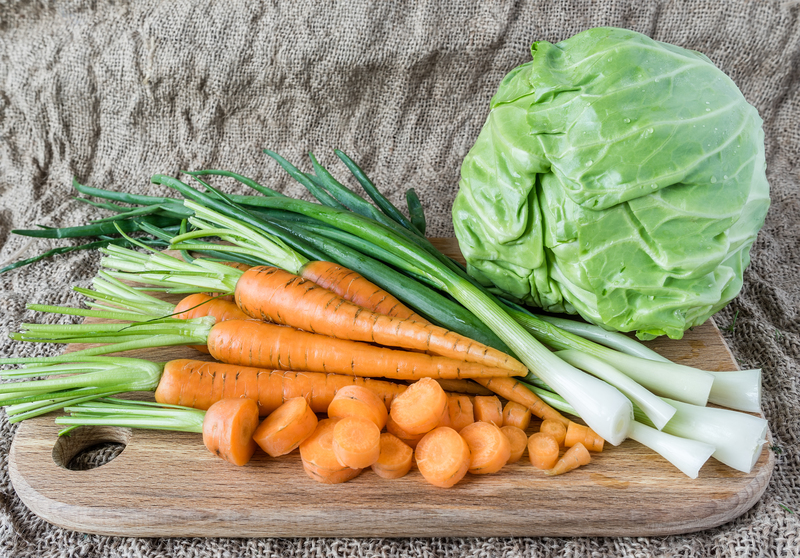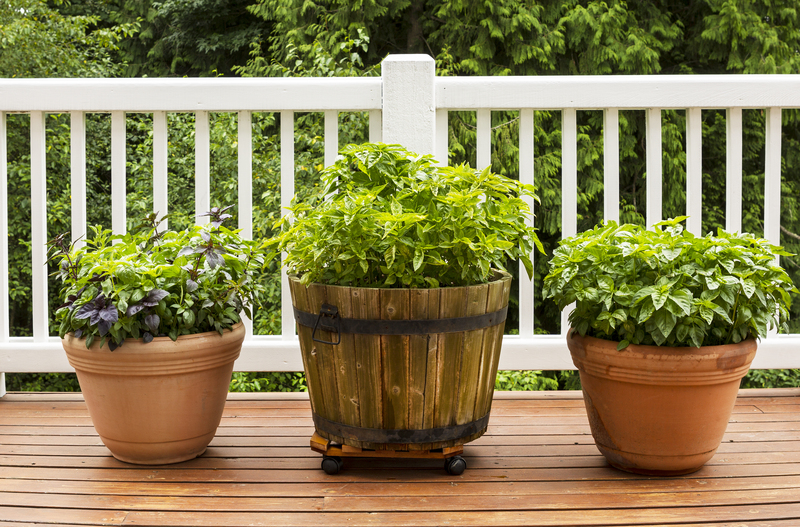Petal Paws: Crafting Canine-Compatible Gardens
Posted on 23/06/2025
Petal Paws: Crafting Canine-Compatible Gardens
Creating a beautiful garden while ensuring it's safe, functional, and engaging for your four-legged family members is the dream of many dog owners. Petal Paws: Crafting Canine-Compatible Gardens explores tried and true, and creative strategies to harmoniously blend lush, blossoming landscapes with the daily joys of dog companionship. Whether you have a sprawling backyard or a cozy patio, dog-friendly gardening can enhance your outdoor sanctuary for both humans and hounds.
Why Build a Dog-Friendly Garden?
Dogs are curious creatures, often exploring with their noses and mouths. A traditional garden may contain hidden hazards or temptations, leading to trampled plants, dug-up flower beds, or accidental ingestion of toxic species.
A canine-compatible garden is designed to prevent such issues while maximizing enjoyment for both pet and owner.
- Safety: Eliminates toxic plants and dangerous materials.
- Stimulation: Provides sensory-rich spaces to stimulate your dog's mind and body.
- Harmony: Encourages harmonious coexistence between your love for plants and your pet's natural instincts.
- Easy Maintenance: Reduces time spent on repairs and cleanup.

Planning Your Petal Paws Paradise
Thoughtful planning is the foundation for any stunning, dog-safe landscape. Here's how to begin crafting a garden that both blooms and wags:
1. Assess Your Outdoor Space
- Size & Layout: Observe how your dog moves about--racing, sniffing, lounging. Map out routes and "favorite" spots.
- Sun & Shade: Note sunny patches and shady retreats to match plant choices with canine relaxation areas.
- Soil & Drainage: Consider areas prone to mud or puddles, as these can become digging or rolling zones.
- Boundaries: Check fences and gates for security, particularly for energetic or digging breeds.
2. Choose Dog-Safe Landscaping Materials
- Pathways: Sturdy materials like decomposed granite, flagstone, or brick can withstand paws and claws. Avoid sharp gravel or loose mulch that may injure or tempt curious dogs to snack.
- Mulch: Opt for natural, non-toxic mulches--such as cedar, pine, or untreated wood chips. Steer clear of cocoa mulch, which is dangerous to dogs.
- Fencing: Ensure fences are high enough and buried if you have a digger. Consider reinforcing vulnerable areas with sturdy edging or buried wire.
3. Select Pet-Friendly Plant Life
Not all blooms and greenery are safe for canine companions. Here's how to make dog-conscious choices:
Popular Dog-Safe Plants for Beautiful Blooms
- Roses (with thorns trimmed or select thornless varieties)
- Sunflowers
- Snapdragons
- Marigolds
- Camas
- Coral Bells
- Spider Plant
- Nasturtium
- Fuchsias
Avoid these Common Toxic Plants
- Azaleas and Rhododendrons
- Lilies (many varieties are extremely toxic to pets)
- Foxglove
- Oleander
- Daffodils
- Tulips (especially bulbs)
- Ivy
- Sago Palm
Always research each plant before introducing it into your garden, as even some common ornamental options can be hazardous to curious canines.
Design Elements for a Dog-Loving Yard
To create the quintessential canine-friendly garden, balance your love for lush flora with spaces tailored to meet your dog's instincts. Dog-compatible gardens don't mean sacrificing style! Let's look at essential features:
Paths and Playways
- Running Tracks: Dogs love to patrol! Create circular or looping paths using tough groundcovers or flagstone for non-slip movement.
- Sensory Trails: Border paths with herbs like basil, lavender, and rosemary. Scented plants stimulate the nose and are generally safe for paw traffic.
Dig Zones
- Designated Digging Spots: For dogs compelled to dig, provide a loose-soil section or sandpit. Bury toys or treats to encourage use.
- Barrier Plantings: Surround flower beds with thick, low shrubs to "fence" them off from playful paws.
Shady Havens
- Restful Retreats: Incorporate shady trees, pergolas, or canine cabanas, ensuring cooling spots on hot days.
- Soft Surfaces: Use grass, clover, or tough groundcovers for comfortable lounging.
Water Features
- Canine Splash Zones: Shallow fountains or recirculating streams add beauty, humidify the air, and offer a spot for hot dogs to cool their paws.
- Safe Drinking: Avoid stagnant water sources; ensure fountains refresh often and are easy to clean.
Secure Boundaries
- Sturdy Fencing: Adapt style to breed and escape tendencies. Double-gates and invisible fence systems can add extra peace of mind.
- Natural Screens: Hedges and dense shrubs offer privacy and block visual triggers from neighboring yards.
Pet-Safe Fertilizers and Pest Control
Always choose organic, non-toxic products for fertilizing and pest control. Many chemical options can be hazardous if ingested or walked through by pets.
- Manual Weeding: Pull weeds by hand or use safe vinegar-based sprays.
- Garden Companions: Encourage nature's pest control by attracting birds, ladybugs, and beneficial insects.
Creating Enrichment with Landscaping
A successful dog-friendly garden stimulates not just the senses, but the mind and body. Enrichment activities prevent boredom and destructive behavior while supporting your dog's health and happiness.
Engaging Features for Dogs
- Agility Elements: Incorporate tunnels, low hurdles, stepping stones, or even small bridges for dogs to explore.
- Hidden Treat Zones: Bury safe treats or install foraging puzzle toys in specific areas to encourage sniffing and scent games.
- Vertical Interest: Raised planters, trellises, and dog-friendly climbing frames add levels for sniffing and surveying.
- Interactive Water Play: Hose attachments and splash pads for supervised play.
Seasonal Adaptation for Canine Comfort
- Summer: Install shade sails or umbrellas and switch to drought-tolerant groundcovers to avoid hot, burned paws.
- Winter: Lay straw or weather-resistant mats on muddy or icy patches for secure footing.
- Autumn: Clear leaf litter that may harbor pests or mold, and select non-slip materials for walkways.
Maintenance Tips to Keep Gardens Dog-Proof (& Beautiful)
- Routine Patrols: Check for broken fences, trampled plants, or holes. Train your dog to respect new features as needed.
- Prompt Cleanups: Remove pet waste daily to keep the garden clean and prevent 'hot spots' on lawns.
- Reinforce Borders: Replace or repair edging and low fences that become loose over time.
- Consistent Training: Use positive reinforcement to redirect unwanted behaviors--teach "leave it" and other cues for garden respect.
- Healthy Lawns: Reseed or patch compacted or burned grass as needed using dog-friendly seed blends.
Common Challenges in Petal Paws Gardens (& Solutions!)
- Digging in Flower Beds: Offer a special digging area, reinforce borders, and train with rewards.
- Yellow Spots on Grass: Encourage dogs to use mulched potty areas or limestone treatments to neutralize acidity.
- Chewing Plants: Grow tough, unappetizing foliage and routinely supervise dogs in the garden; provide enriching chew toys.
- Mud & Tracking: Install "paw-washing" stations or stepping stone paths to wipe paws before entering indoors.
- Boredom & Destruction: Rotate enrichment features and spend time playing in the yard together.

Case Studies: Real-Life Canine-Compatible Gardens
The Urban Nomad's Terrace
Living in the city doesn't mean sacrificing pet-friendly landscaping. A small patio was transformed into a sensory wonderland with:
- Raised herb planters safe for dogs
- Artificial grass for soft play
- Treillage screens for visual privacy
- A recirculating mini-fountain for drinking and play
Suburban Family Retreat
A large, fenced yard features:
- Circular running track "patrol path" around the perimeter
- Digging pit filled with sand and dog toys
- Flower beds with only pet-safe species
- Shade sail with a dog bed for summer naps
Conclusion: Uniting Blooms and Barks with Petal Paws
Designing a dog-compatible garden is a creative and rewarding project, blending horticultural passion with devotion to your pup's well-being. By choosing the right plants, thoughtful features, and safe materials, you lay the foundation for outdoor living that is as enchanting for you as it is invigorating for your dog. Take pleasure in the process, knowing your efforts lead to wagging tails, serene afternoons, and the shared joy of nature's beauty.
With a little planning, your garden can truly become a sanctuary for both paws and petals.
Petal Paws Garden FAQs
- What are the best ground covers for dog-friendly gardens? -- Clover, Irish moss, creeping thyme, and buffalo grass are hardy and gentle on paws.
- How can I keep my dog from digging up my garden? -- Provide designated digging zones and reinforce plant beds with borders.
- Are there particular flowers that dogs dislike? -- Most dogs avoid pungent herbs like rosemary or thorny shrubs, but individual preferences vary.
- Can I use standard fertilizers in my garden? -- Use only pet-safe, organic fertilizers to prevent accidental poisoning.
- What if my dog is allergic to certain plants? -- Work with your vet and experiment with hypoallergenic groundcovers and non-irritating species.
Discover the best of both worlds and embark on crafting a canine-compatible garden for your home. Your loyal friend--and your lush landscape--will thank you!

